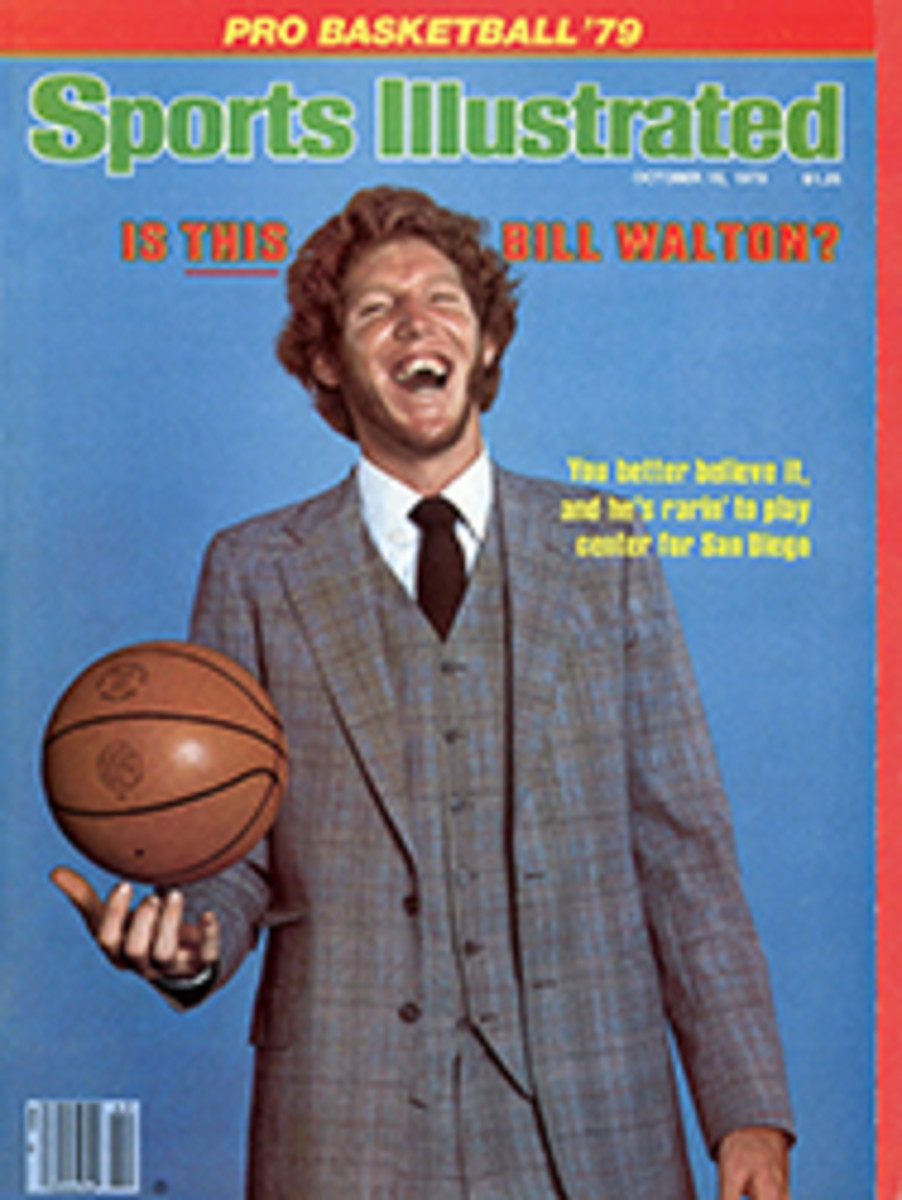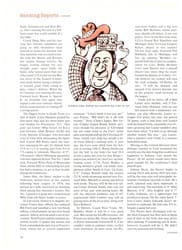
A boat that found its match
Sailors are a very loyal breed. A true sailor loves all boats and particularly his own, for in his mind her virtues always outweigh her faults. That quirk largely explains why particular models and racing classes seem to live on beyond their appointed time. Indeed, one sure way to ensure the longevity of any sailing class is to start a match-race series in which hulls of the same kind meet each other one-on-one. When a round-robin match-race competition is close, naturally all the near winners are eager for another crack at the champ, but oddly, for reasons landbound men of sound mind cannot possibly understand, when a match-race event becomes very one-sided, its popularity is equally assured. In fact, to judge by recent history, the more lopsided the outcome, the more attractive the event becomes.
For instance, in the past few weeks a fleet of six-meter boats—four American, four Swedish, one Australian—battled it out on windy San Francisco Bay for the privilege of meeting in the two-boat finals of the American-Australian Challenge Cup. No matter that in the 11-year history of this best-of-seven series an American boat has always won. Or that in the 12 Cup races held since 1970, Tom Blackaller of Alameda, Calif. has been at the winner's helm for all 12. Or even that in his first three defenses of the Cup (1970, 1973, 1976) Blackaller led his rivals around every mark of every race save one, in which he was obviously fouled and deliberately shied away to avoid a counterprotest. In spite of all this, American-Australian Cup hopefuls appear faithfully every three years and, in fact, were back in record numbers for the 1979 series, even though Blackaller was back, too. But then, match-racing sailors are suckers for punishment.
Consider the Congressional Cup, the world's finest match-racing event, begun in 1965 at Long Beach, Calif. in Cal 40s, a cruising design seemingly better fitted for ocean contests than for dueling around buoys on a closed course. The Congressional Cup started as a regional affair, and although the majority of competitors now come from afar, Southern Californians still dominate the event. Until 1977, when America's Cup skipper Ted Turner came riding out of the Southeast to take the Congressional Cup on his eighth try, it had never been won by anyone east of the Santa Ana Freeway. Still, skippers from around the world appear yearly at Long Beach to take another beating.
Then there is the America's Cup, the most famous of match-racing series. In 23 challenges over the past 110 years, the U.S. has won 74 races, its rivals only seven. When the English lost dismally in their 1958 and 1964 challenges, it seemed the America's Cup was on the way to extinction, and with it the handsome 12-meter hulls that vied for it. But before the English were done, the Australians had a go at it, and from there America's Cup fever spread. Next summer there will be at least one boat apiece from Australia, France, Sweden and England—all tilting at the same indestructible windmill and paying dearly for the privilege.
The same sort of abiding love and obstinance that have prolonged the lives of Cal 40s and 12-meter hulls have also saved the six-meter class, the type of boat sailed in last week's American-Australian Cup final. In essence, a six-meter is the littlest sister of the 12-meter. Foot for foot and pound for pound they both cost a lot, and in comparison to other classes, to be sailed well both need a lot of brawn and brainpower.
In 1906 an international rule was evolved for so-called "meter boats." Such is the complexity of the rule, it is doubtful if even Albert Einstein, whose avocation was sailing, could have digested every paragraph and subparagraph at first reading. These boats—the six-meter and her bigger sisters, the eight-, 10-and 12-meters—are commonly called "thoroughbreds of the sea," an apt description. Like the thoroughbreds of the track, the meter boats are beautiful and brittle. They are also notoriously slow out of the gate, but fast once they are under way.
The little sixes served in the Olympic Games from 1908 through 1952 and in the worldwide Gold Cup competition. But because of its cost, in the decade after World War II the six-meter seemingly had come to the end of the line. In both the Olympics and the Gold Cup it was replaced by the 5.5-meter boat, which was simpler and less expensive. By 1950 the only U.S. fleet of consequence was in Seattle, and it was composed largely of prewar hulls. By 1960 there was no international competition worth the name, and like the Viking colonies of ancient Thule, such pockets of the class that did exist in the U.S. and abroad had lost contact.
Today, 20 years after the six-meter seemed doomed, it prospers, thanks to an Australian wine distiller named John Taylor, who loved the class enough to try to keep it alive in his own country. In 1967 Taylor commissioned Sparkman & Stephens to design a new hull, on the hopeful theory that other Aussies would be provoked into following suit. The fleet Down Under had never been large—10 boats at most—and considering that there were only five remaining in 1967, Taylor's venture was a typical Australian gamble against the odds. It paid off far beyond his expectations.
Yachting magazine ran a short item about the new Australian six-meter, and, by chance, just a day before he was bound for Australia on business, Eustace (Sunny) Vynne, one of Seattle's devoted six-meter skippers, happened to read it. Vynne called on Taylor in Sydney and proposed that the Australian bring his boat to America to match-race against Seattle's best. Taylor was understandably reluctant. "I had never left the shores of Australia," he recalls, "and it seemed like a big undertaking. I kept telling Sunny, 'It's 8,000 bloody miles,' and he kept saying, 'John, put the boat on a freighter. I'll do the rest.' "
Although Taylor had not traveled widely, in sailing he was worldly-wise. From accounts in Yachting, he knew of the fitful, whimsical winds and tides in Puget Sound. He agreed to bring his six-meter to the U.S. provided the races could be held on neutral waters. The St. Francis Yacht Club of San Francisco agreed to stage the series and the American-Australian Challenge Cup was born.
There is a saying Down Under that Australian sailors never quit until the wind is strong enough to blow dogs off their leashes, but it was agreed that, in consideration of the brittleness of six-meters, no race would be sailed on blustery San Francisco Bay in winds exceeding 25 knots. In that first series (in July 1969) Taylor's brand-new boat, Toogooloowoo IV (a pseudo-aboriginal name that means nothing), was beaten four races to three by Goose, a 13-year-old U.S. hull skippered by a University of Washington undergraduate, Brian Wertheimer. Sailors of the St. Francis Y.C. were so taken by the series that they offered to buy Toogooloowoo IV provided Taylor would build another challenger and race again. Taylor agreed. When the club's lawyer, leery about the possibility of joint property entanglements, asked Taylor his full name and his wife's maiden name and whether at the time of the construction of the boat he had been married to the same woman, Taylor replied, "Look, hold on a minute. I've only sold one boat in my life and, whereas the way we do things in Australia may seem funny, I sold it at the bar of the Royal Prince Alfred Yacht Club on a handshake. If you want to buy Toogy IV and want me to build another to race again, all you have to do is shake my hand." In 1970 Toogooloowoo IV, renamed St. Francis IV, returned to Australia and, with Blackaller at the helm, she won four straight races against Taylor's new Toogooloowoo V.
In the third series, held on San Francisco Bay in 1973, Blackaller again won four straight races, sailing a new Gary Mull design, St. Francis V, against Taylor's Pacemaker. In 1976, in St. Francis VI, he defended once more without a loss against Taylor's fourth boat, Prince Alfred, a bulbous-bowed craft of dubious worth. By then the Swedes had heard about the six-meter revival, so in 1976, in his home waters, Taylor first had to defeat a Swedish six, May Be X, to earn the right to be beaten by Blackaller.
In spite of his exceptional American-Australian Cup record, Blackaller really does not care much for six-meter boats. "It is a whole lot of effort for very little sailing," he says. "We have only sailed this present boat in 20 races. The amount of planning and effort required for such little sailing doesn't appeal to me."
Blackaller had planned to quit the six-meter game after his third defense, but this September he again returned to the series on San Francisco Bay, tempted by the quality of the competition. There were three other American boats on hand, vying with Blackaller's St. Francis VII for the honor of defending. Blackaller beat Wertheimer, who had skippered the 1969 winner, and, without suffering a defeat, also beat two America's Cup helmsmen, Malin Burnham and Ted Turner. Meanwhile, on a separate course the four Swedish boats were scrapping to determine which would meet Taylor's Pacemaker for the right to be beaten by Blackaller. In this semifinal round, Pacemaker lost to the Swedish May Be XII.
In the defense against May Be XII Blackaller once again won four straight and led at every mark. On almost every downwind leg the Blackaller crew won five seconds or more simply on the adroit raising and lowering of their spinnaker. On almost every tack they were a second better getting the jib across and filled. If, as it truly seems, a constant thrashing by Yankee crews is what keeps rivals coming back for more, then Blackaller is about the best drawing card any match-racing class could have.
Although his boat was shut out of the finals, John Taylor, the Aussie who started it all, was not dismayed. All he had intended to do a dozen years ago was to keep the six-meter alive back home, and somehow he had done much more. "I'll have another bash at it in 1982," he said. "But to see the new boats competing here, and to know there are 20 or 30 new ones now in Europe and maybe 15 in America, that's dream enough for me. In losing I have really won."
PHOTO
St. Francis VII (left) leads May Be XII to the windward mark.
PHOTO
Blackaller and sixes proved a perfect fit.

